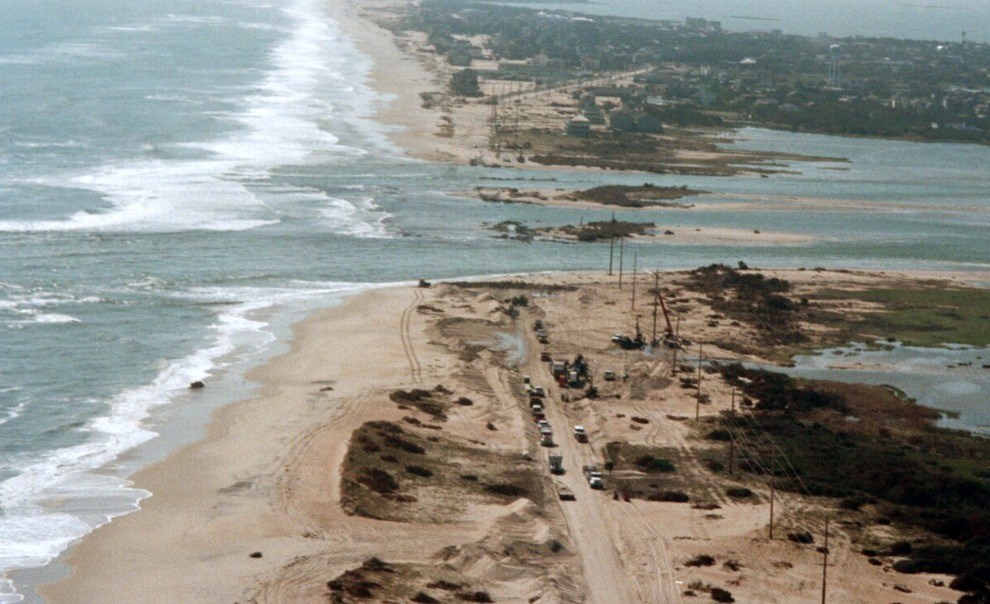
NPS photo by Julia Brunner.
Introduction
Geologically, hurricanes accelerate coastal processes so that during the hours of storm passage, the amount of erosion and deposition in coastal systems equals what would normally take months or even years.
Hurricanes produce a gently sloping, nearly planar beach (Hayes 1965). When a hurricane has passed, normal coastal processes resume and, in time, a normal beach profile (the topographic trace of a beach perpendicular to the shoreline) is restored. Generally speaking, an accreting (“growing”) beach has a slightly concave-upward foreshore and a gently landward-sloping backshore. An eroding beach profile is commonly all foreshore with the backshore removed (Neuendorf et al. 2005). Sand eroded from a beach during a hurricane is gradually carried back by fair-weather wave activity and results in the rebuilding of the normal backshore and foreshore. A lowered backshore may persist for several years between hurricanes because it is outside the influence of normal wave actions (Hill and Hunter 1987). Longshore drift smoothes irregularities in the shoreline and builds bars and beaches across the mouths of washover channels (Weise and White 1980).
During a storm event, erosion of the beach profile may occur very rapidly, but the recovery phase may be much longer (on the order of weeks or years). Study of beach recovery after Hurricane Anita (1983) on Galveston Island, southeastern Texas, revealed four time-dependent stages of recovery: (1) rapid forebeach accretion following a storm, (2) slower back beach aggradation, (3) dune formation, and (4) dune expansion and vegetation recolonization (Morton et al. 1994). Only undeveloped beaches experienced all four stages of post-storm recovery. Developed beaches reached stage 2, but additional recovery was prevented because beach widths seaward of the houses were too narrow to permit eolian transport and construction of dunes (Morton et al. 1994).
Related Links
Last updated: June 7, 2019
